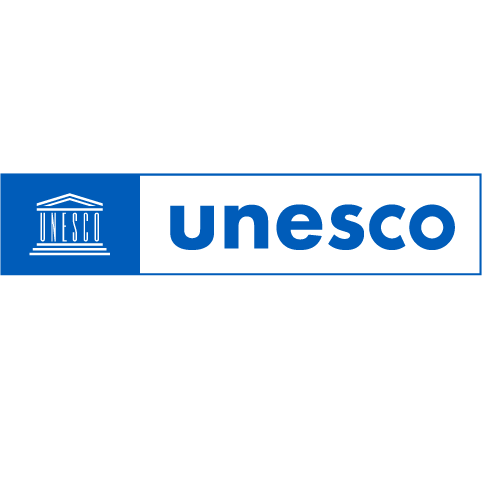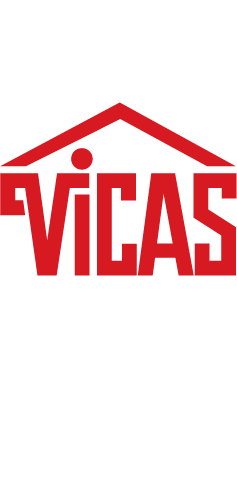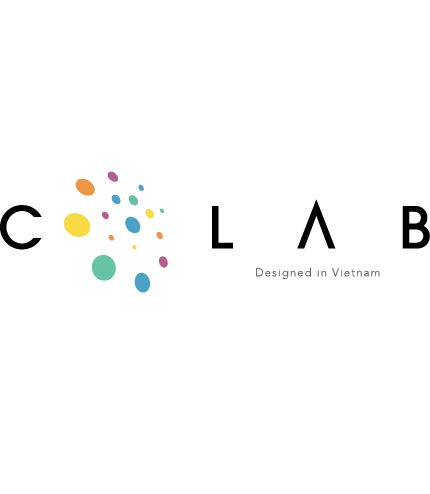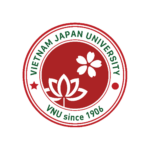Join us in getting to know three of the talented Lộn Xộn folks – Cécile Ngọc Sương Perdu, Nguyễn Anh Huy and Nguyễn Trường Nhật – and learn more about the artistic, cultural and creative contexts of Vietnam’s Mekong Delta region.
Of Beginnings: A Conversation with Lộn Xộn
A brand-new arts collective of Mekong Delta region Gen Z youngsters, and one of VFCD 2021’s most memorable projects

As I ‘stepped’ into this Gather-based virtual space, a Mekong-accent voice sounded in my headphones: “Anyone broken up with their bồ recently?” After a long day of attending macro-level seminars, I couldn’t help but burst out in laughter at the endearing question. The owner of the voice – connecting in from Cần Thơ and represented on-screen through an ‘avatar’ (purple pirate hat, blue face mask) – was standing on a grand virtual stage, playing host to a cosy gathering, surrounded by about 10 other avatars, in a lot of land lined around with trees, a campfire in the centre, and dotted with red and blue plastic chairs the types you’d find in Vietnamese school canteens. The sounds of giggles and banters filled the midnight Internet transmission, a cải lương song playing in the background. Welcome to Lộn Xộn Expo.
Lộn Xộn (translated as ‘messy’) is the name of both the collective and its debut project, gathering university students in Cần Thơ as well as a graphic design lecturer at FPT University Cần Thơ: Cécile Ngọc Sương Perdu (founder of Lộn Xộn), although she was quick to note when talking to me how there’s no barrier between the students and her, the latter as much an instructor as a companion of the former. Like many other arts and cultural initiatives of the past two years, Lộn Xộn has undergone a tortuous Covid-impacted journey, from the inception of the group itself at the beginning of this year to an eventual and necessary migration from real-life to ‘online’.
Though Gather has been increasingly familiar to most as an exciting solution to meeting needs in the Covid-19 era, Lộn Xộn Expo might be amongst the few projects that have utilised this platform for an artistic exhibition – doing so in a refreshingly effective and creative way, and engendering new possibilities pertaining to virtual experiences. Going for a walkthrough of the show’s 19 projects, I had the chance to view artworks, watch videos, test out AR effects, and even try my hands on musical instruments scattered about in the space, and that’s not even mentioning the myriad of other interactive features between visitors (an example being the aforementioned late-night ‘radio show’).
Not only in terms of the spotlighted artworks and objects, the background landscape was obviously also well-designed: instead of using one of Gather’s readily-available ‘maps’ the show gave each project a customised and personalised structure built by Lộn Xộn members themselves, bearing a distinct sense of place and inspired by quotidian life around them. Hát bội theaters, lô-tô stalls, quays, riverboats, garden cafés, post offices, temples, libraries, ‘co-working’ offices, outdoor cinemas, and more and more – if that doesn’t seem ‘messy’ enough, you can even pay a visit to the ‘free build’ space where anybody could freely create literally anything their imagination sees fit (when I went there, somebody had already put up an entire forest; next to it, for some reasons, were numerous TV screens).
Yet Lộn Xộn isn’t only about playful, genZ-associated creativity and mischief, as its members harbour ambitious ideas to do with their geographical/cultural region: “I think everything needs a beginning. If we could succeed this time and open up a new path forward for Cần Thơ, then hopefully there will be many more groups helping us grow the industry together”, said Nguyễn Trường Nhật, a member of the core team.
Going back in time to the point when the exhibition was “only 75% completed”, join us in getting to know three of the talented Lộn Xộn folks – Cécile Ngọc Sương Perdu, Nguyễn Anh Huy and Nguyễn Trường Nhật – and learn more about the artistic, cultural and creative contexts of Vietnam’s Mekong Delta region.

How was Lộn Xộn founded?
Cécile Ngọc Sương Perdu (CNSP): As with the group’s name, it’s quite a ‘messy’ story. I’d wanted to form a sort of design community in Cần Thơ, an idea I thought about for a while. One day while teaching Nhật’s class I sent a message to Huy: “Would anybody be interested if we make an exhibition, could you ask around?” Over the next two-three hours messages flooded in from the students, and the next day we had a meeting, started brainstorming, and then one thing just led to another. It’s been a very organic process. Lộn Xộn has received a considerable level of attention, because even though Cần Thơ and the Mekong Delta have the need and capacity for design work, there haven’t been many opportunities for exchanging and learning. Cần Thơ’s prevalent (design) aesthetics are influenced by its tourism business, so people tend to follow the paths that have been proven effective. This means that design work in this city is rather formulaic, with no consideration of other aesthetics or cultural aspects.
Nguyễn Anh Huy (NAH): I think all students can see the difficulties in studying design in Cần Thơ. Sương does too and she has the capacity to initiate a project, so when she asked, everyone jumped in ready to work on it right away. Personally I really like going to art exhibitions, but then I would have to go all the way to Ho Chi Minh City, and not everyone has the opportunity or time to do so.
Nguyễn Trường Nhật (NTN): I myself was born in a rural area, so I used to be quite a stranger to the field of design. As I moved to Cần Thơ I thought this would be the new environment that I needed , but turned out it wasn’t. Even in Cần Thơ I haven’t had enough opportunities for further learning. So when we started this project with our teacher, it was like a duck to water.
Lộn Xộn has received a considerable level of attention, because even though Cần Thơ and the Mekong Delta have the need and capacity for design work, there haven’t been many opportunities for exchanging and learning.
So Lộn Xộn mostly consists of university students? What are some of the activities you’ve been doing?
CNSP: They are all students and are very hard-working. We initially started with students from FPT University Cần Thơ, and later others from outside the school were also invited to join.
In preparation for the Expo project Lộn Xộn operated like a studio since June. People would propose projects, and each week we would hold ‘critique’ sessions to discuss the works and support each other; this is a great model as the group gathers those who have different styles and directions, as well as different levels of experience and skills. Due to Cần Thơ’s social-distancing measures we’ve had to hold the exhibition online and focus on graphic design and illustration works this time. When we initially planned for an in-person show some members actually proposed installations or sculpture works.
We also often hold practice sessions, which are focused on sketching, drawing, or life drawing. I want to have these activities in place so that the students’ practices could become more free – from my personal experience, there are workshops that might lean more toward stereotypes and tell you how to draw, for instance, in accordance with what the measurements of a woman should be or how white her skin should be, etc. In addition, we’ve been working on a ‘sketchbook library’ project which has been very interesting. We’ve received sketchbook submissions from people living in the North, in Danang, Ho Chi Minh City, and even from the UK and Thailand.
NAH: We’ll have a second call for submission for the sketchbook project as it’s been so well-received. Many are not professional practitioners but they love to look at sketchbooks, because through that they could more or less understand a person’s design thinking, as well as their personality and thought processes.
CNSP: As of right now this library has around 32 sketchbooks. In the Expo space on Gather we created a whole virtual library for showcasing them. There are participants who aren’t involved in the design or creative sectors; for example, one person works as an accountant, but she draws beautifully and with fresh new perspectives. I find her work to be very interesting and there are things I could learn from.
Sương has just mentioned the critique sessions, how important do you think this activity is to the students?
NAH: In Lộn Xộn there are freshmen who haven’t actually started their study, but they decided to join us anyway. They have ideas but might encounter difficulties in terms of techniques, so there have to be sessions like this for us to support and guide each other. Their works might not be that complete yet, but the important thing is that they dare to give things a try, to show their work to others, and to experience it all.
CNSP: The critiques are free for anyone to join when they have time, and they could show their works or check out those of others. Sometimes I just sit there eating popcorn and let the students discuss among themselves. My motto in teaching design is to enable students to practice and experience things outside of the campus, too. When they eventually start working they will have to face different opinions, so they need to be able to realise which of those are good and constructive, and how to stand their ground when faced with irrelevant opinions.
Priorly the students would come by my house and work there. During this social-distancing period, we’ve built an entirely-virtual ‘headquarter’ on Gather, then every Sunday and Thursday afternoon we would go on there to talk about each other’s works.
The important thing is that they dare to give things a try, to show their work to others, and to experience it all.
Some of the artworks featured in Lộn Xộn Expo. Click on each image for full view and further info
For me, Lộn Xộn Expo is one of the projects I’ve seen that effectively and impressively recreates – in a virtual space – the experience associated with a physical arts exhibition. Could you tell us more about the Gather platform used for this exhibition?
CNSP: I often played Pokemon when I was a kid, so I find that there are a lot of similarities with Gather, and it’s quite user-friendly. I first created a master-plan, before contacting each artist and asking them what they needed/wanted for their spaces, and from there we worked together to design and develop each area of our Gather map. Huy was heavily involved in this space-making process. The problem with virtual spaces is that the sense of identity might easily be lost, and so is the spirit of a particular region. But with Lộn Xộn we wanted to focus on the spirit and talents of the Mekong Delta region, so we included in the space-making various images that might appear familiar to the locals while perhaps a bit strange to those not living here.
NTN: Actually they are not too strange, like images of the cyclo, a boat as part of a floating market, or the monkey bridge, or children’s games.
CNSP: Some students even helped me construct the Ninh Kiều Wharf in its entirety, as well as other well-known locations in Cần Thơ: the Church, Chùa Ông, Khám Lớn, amongst others. One of our goals is that visitors of the virtual exhibition will get to know more about what Cần Thơ has to offer, and maybe one day they can visit us here. I find that in the Mekong Delta region there’s a very interesting design spirit. For example, my background is architecture so I’ve studied Khmer temples in the region. These structures show that this land has brought together the essences of many different cultures, eras, ethnicities, regions.. so as to build their own. In this temple right behind my house, the architecture is a mix of elements from Khmer, Hindu and Buddhist architectures, while even incorporating Art Deco and old French architectural styles. I think that Lộn Xộn conveys a similar spirit. We want to show what this region is all about, but not in a nostalgic way or exactly like things used to be, but rather through a new perspective. I think this is important to people in the Mekong Delta region if they’re to find their own path in design.
A walkthrough of various area of the Lộn Xộn Expo space
Could you tell us more about the creative scene in Cần Thơ ? What do you think is the most important thing that’s needed to be in place to support the community here?
CNSP: We were surprised to learn that we are the only team from the Mekong Delta taking part in this year’s VFCD. This region lacks many things, and we wonder if there is any other ‘collective’ here apart from Lộn Xộn. I think Cần Thơ really needs to invest in small and independent collectives of young designers – as right now they don’t have many chances to learn and develop, so they end up having to go to big cities to pursue their dreams. As a designer in the 21th-century Mekong Delta region, what do we have access to: a diversity when it comes to culture, design, and the ecosystem. However, the region is also going through rapid transformations and at high risk of one day disappearing; and the young people of today are the generation that will have to face all these things. As such, the youth is whom we should invest in, so that they can instill the spirit of creativity in every industry, helping Cần Thơ and the Mekong Delta to thrive in this ever-changing environment.
Looking back at the making of Lộn Xộn Expo – an online exhibition developed during a difficult social distancing period – what do you find as the most challenging aspect?
NAH: In that process what I found to be most challenging was to keep the team going until the very end. Many members lack experience, so when we were halfway through they might’ve felt like they didn’t know what to do next, or perhaps they weren’t satisfied with what had been created. Luckily we have our team, and on a weekly basis we would find ways to support each other, explore the issues and overcome them together. I felt happy working on this project, because I had the chance to do what I’m good at and passionate about. Maybe others are only used to undertaking assignments at school, but with this project we aim for the highest possible quality for the works, so that the students could include them in their future portfolios.
NTN: Another challenge is, because of the pandemic our team has had to work remotely, so it wasn’t as efficient as when we were working in the same place and being able to provide encouragement to each other. Elsewhere, though not a difficulty per se, Lộn Xộn pushed me to carry out more work than I’d have done for school, but because of that when I enter the workforce I’ll perhaps be more familiar with the workplace rhythms. As Huy said, work isn’t tiring at all when you get to do what you love. Right now our teacher is spearheading things, but maybe in the future it will be us leading the way for the younger generation, and just like that the culture and history of the Mekong Delta and of Vietnam in general will not fade away or disappear.

Lộn Xộn’s plans for the future?
CNSP: Now we have seven members in the core team, they have been with me since the beginning of Lộn Xộn, helping me set up the virtual space and organising stuff. I have high hopes for them to continue Lộn Xộn and create bigger and even more “daring” projects, in doing so helping bring together different regions – surely the design spirit of Cần Thơ or Đồng Tháp is different from that of Kiên Giang or Cà Mau, for example. We hope that somebody in the Mekong Delta will see this article and contact Lộn Xộn so that we can collaborate for future projects. If it keeps being just us then that’d defeat the original purpose. There are also several lecturers at FPT University and other schools who want to work with Lộn Xộn, not as teachers, but in the spirit of “hey I’m doing this thing, do you guys want to join in?” A very friendly kind of way.
Next year maybe Lộn Xộn will return and continue; even if our membership changes, this community is still here, people can come and go as they like. As for me, I’ve been thinking of setting up a project whose as-yet unofficial title is ‘Đầu này Đầu kia Bến Ninh Kiều’ (roughly translated as Ninh Kiều Wharf – From One End to the Other), going from one end to the other to practice observation and drawing skills, identifying the important elements that could convey the spirit of the region. We also want to do more ambitious projects but that’d involve more planning. We hope that there will be opportunities to realise in-person exhibitions and other projects taking place in physical spaces. In terms of spaces, we like unorthodox locations which are not meant for artistic activities. We would work with whatever places available and the existing conditions of those places. Perhaps things will also be quite ‘messy’.
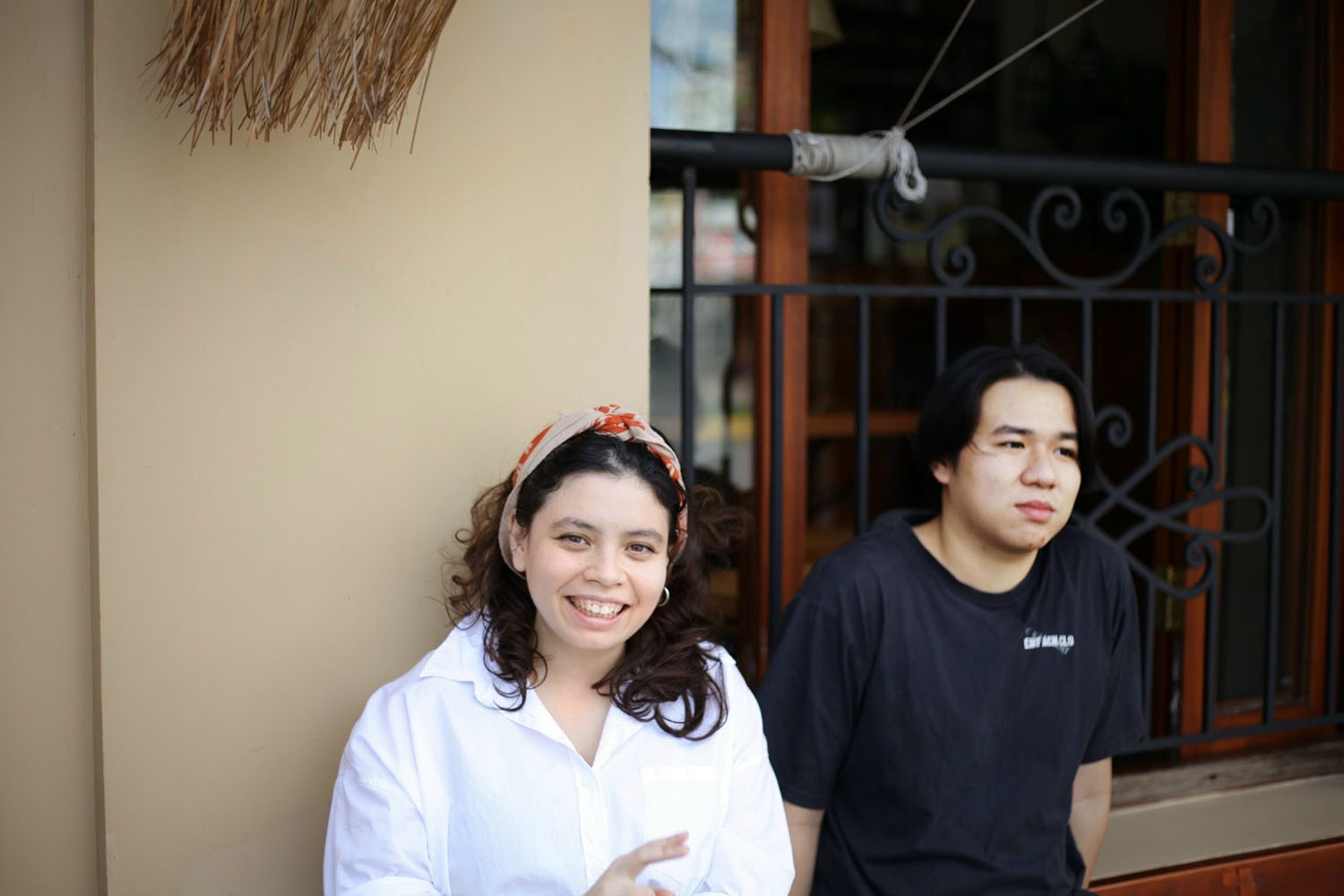
LỘN XỘN is the very first freelance art and design exhibition project in Cần Thơ. With the aim to build a new artistic collective for young creatives to undertake new challenges; to freely express themselves through their artworks and form connections; and ultimately nurture an experimental art community in Cần Thơ.
LỘN XỘN EXPO included artworks from: Bùi Quan Võ Trung Kiên, Bùi Thị Tuyết Nhi, Chim Thị Kim Ngân, Lâm Ngọc Như, Lê Khải Đăng, Lê Phương Đình, Lý Phát Tuấn Anh, Nguyễn Anh Huy, Nguyễn Gia Khương, Nguyễn Hoàng Khang, Nguyễn Hoàng Tâm, Nguyễn Hữu Toàn, Nguyễn Minh Khánh Ngân, Nguyễn Ngô Thành Được, Nguyễn Thị Thu Xuân, Nguyễn Thị Tuyết Nhi, Nguyễn Trường Nhật, Phạm Văn Dương, Trần Hoàng Phong, Trần Ngô Quốc Bảo, Trần Quỳnh Anh, Trần Việt Hưng, Trịnh Duy Phát, Trịnh Quốc Thắng, Trịnh Võ Minh Nhật, Văn Thiên Trường. Management and coordination: Cécile Ngọc Sương Perdu.
Take a look at the brochure of Lộn Xộn Expo here.
Interview undertaken by HDT
Graphics by Rongchơi
Translated into English by Đinh Vũ Nhật Hồng
All images courtesy of Lộn Xộn
Kindly credit VFCD 2021 when sharing the article
Please do not copy or repost without permission



